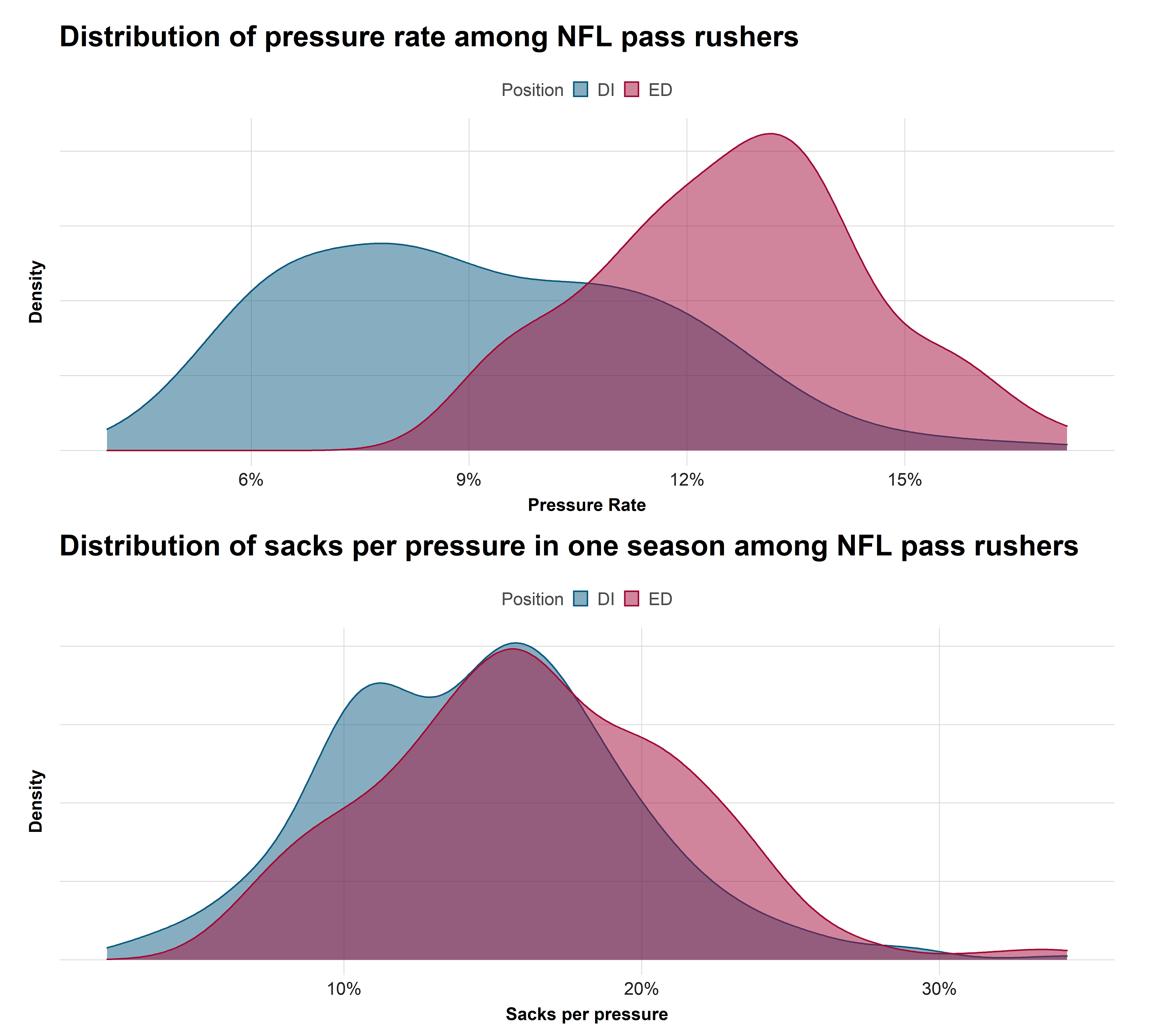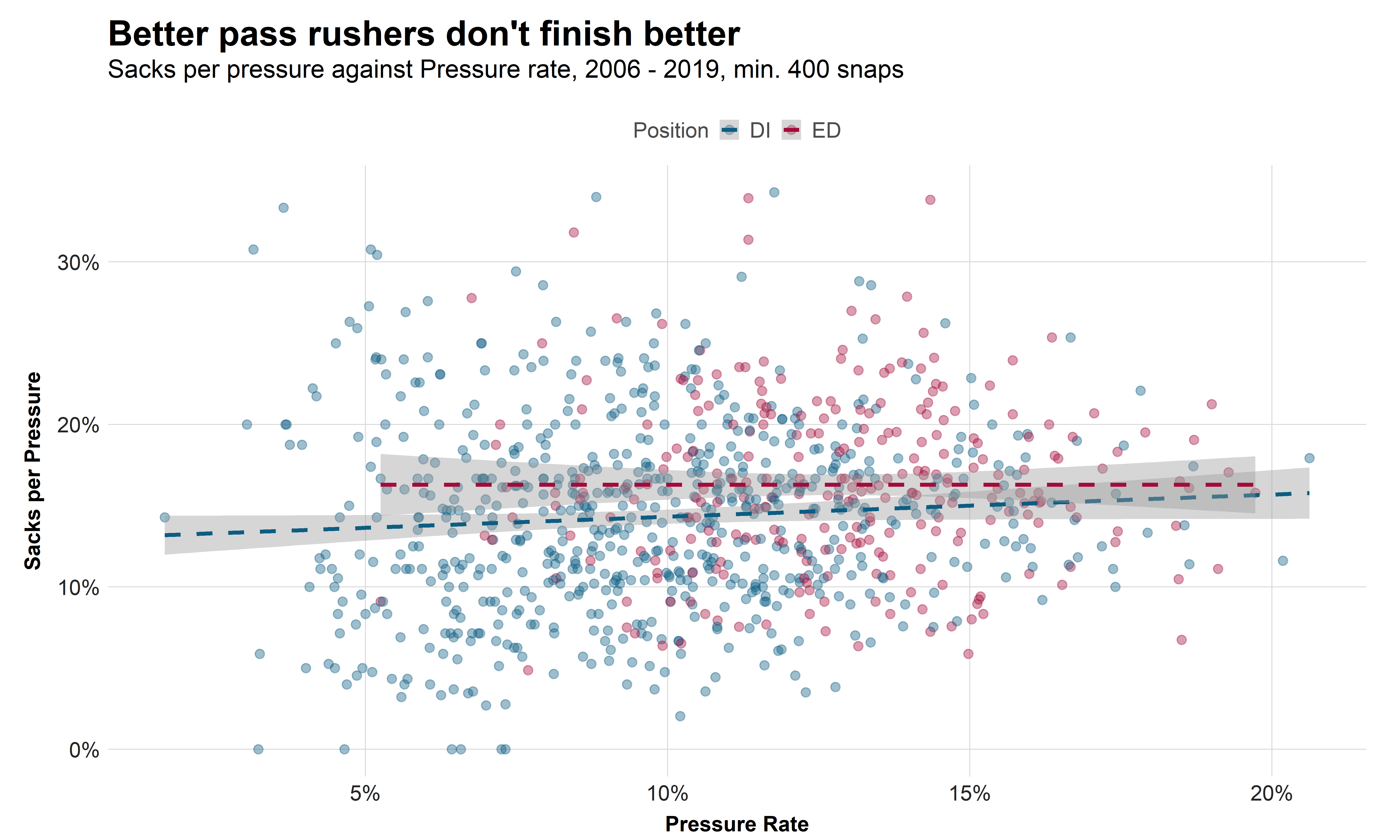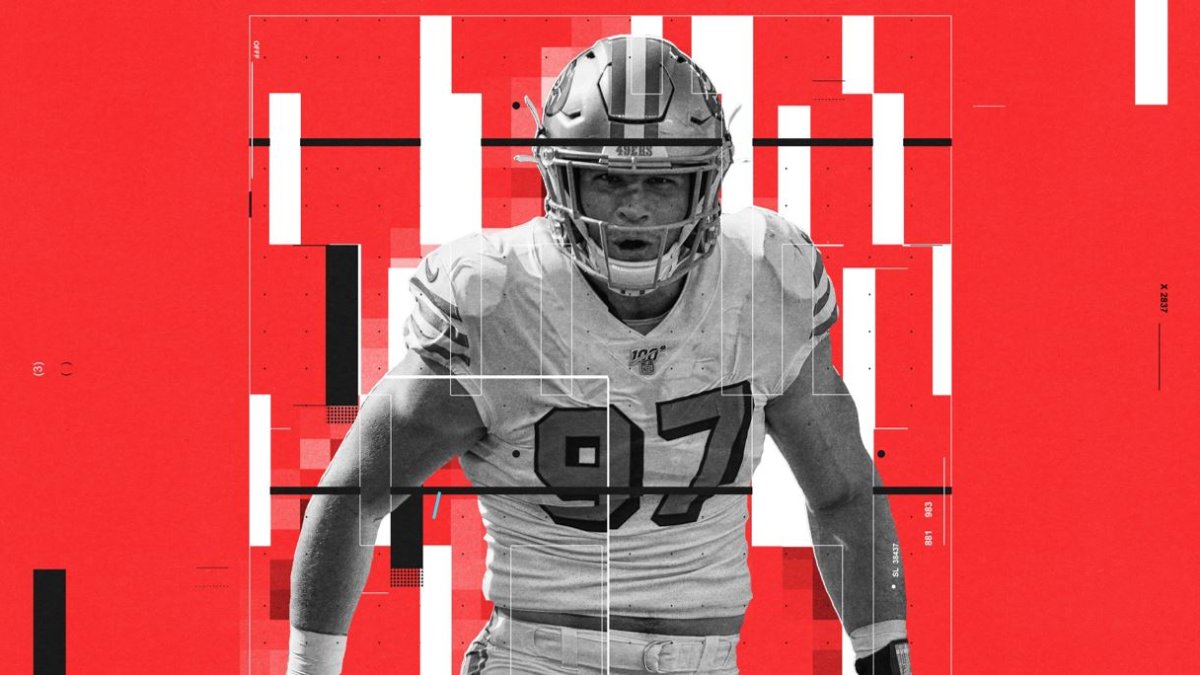Just last week, we revisited the idea of the “sack artist” and found that they don’t actually exist. Instead, our research led us to the conclusion that the rate at which a pass-rusher turns pressures into sacks is not stable from season to season, even after accounting for situational factors.
That being said, nothing is more valuable to a pass-rusher than sacking the opposing quarterback. So, hypothetically, if a pass-rusher was to face the same schedule of offensive linemen as any other pass-rusher, the value of a pass-rusher in a given season depends on two things:
1. His true ability, which controls his pass-rush win rate and (to a great extent) his pressure rate.
2. His luck, which controls the number of pressures he can turn into sacks.
The natural question is, which of these two things matters more? If player A is more skilled than player B, but player B is luckier (with the same magnitude than he is less skilled), who will have provided more value at the end of the season?
[Editor’s Note: PFF’s Player Grades, WAR metric, etc. are powered by AWS machine learning capabilities.]
The first question is what we mean by “the same magnitude.” To talk about this, we have to bring these two things on the same scale — we have to understand their distributions.

To bring luck and skill on the same scale, we will use percentiles of these distributions, i.e., we compare an edge rusher who is better than 70% of all edge rushers to an edge rusher who has more luck than 70% of all edge rushers in a given season.
We will simulate a pass-rusher’s season with different levels of true ability and luck. Any conclusions driven from this will only make sense if these two things are entirely independent, and that’s indeed the case: Players who generate more pressures are neither worse nor better at turning these into sacks than worse pass-rushers who generate less pressure. The R-squared values are below 0.005 for both edge rushers and interior rushers.

In other words, every NFL pass-rusher is at the mercy of the circumstances that allow them to turn their pressure into sacks.
Running the simulations
As you could have already guessed, we run separate simulations for edge rushers and interior pass-rushers. In each simulation, we simulate the downs and distances the opposing offense will face and simulate pressures and sacks based on these situational factors. The total numbers of pressures and sacks determine the shift in expected points added for the offense based on the numbers we already wrote about.

DOMINATE FANTASY FOOTBALL & BETTING WITH AI-POWERED DATA & TOOLS TRUSTED BY ALL 32
 Unlimited Fantasy League Sync
Unlimited Fantasy League Sync
 Fantasy Start/Sit Line-Up Optimizer & Waiver Wire
Fantasy Start/Sit Line-Up Optimizer & Waiver Wire
 WR-CB & OL-DL Matchups, PFF Player Grades, & Premium Stats 2.0 Tools
WR-CB & OL-DL Matchups, PFF Player Grades, & Premium Stats 2.0 Tools
 Nathan Jahnkes Rankings - #1 Most Accurate Last 70 Weeks
Nathan Jahnkes Rankings - #1 Most Accurate Last 70 Weeks
 PFF Best Bets, Player Props, & Power Ranking Tools
PFF Best Bets, Player Props, & Power Ranking Tools
 NFL Mock Draft Sim with Trades & Draft Grades
NFL Mock Draft Sim with Trades & Draft Grades
Already have a subscription? Log In



 © 2024 PFF - all rights reserved.
© 2024 PFF - all rights reserved.